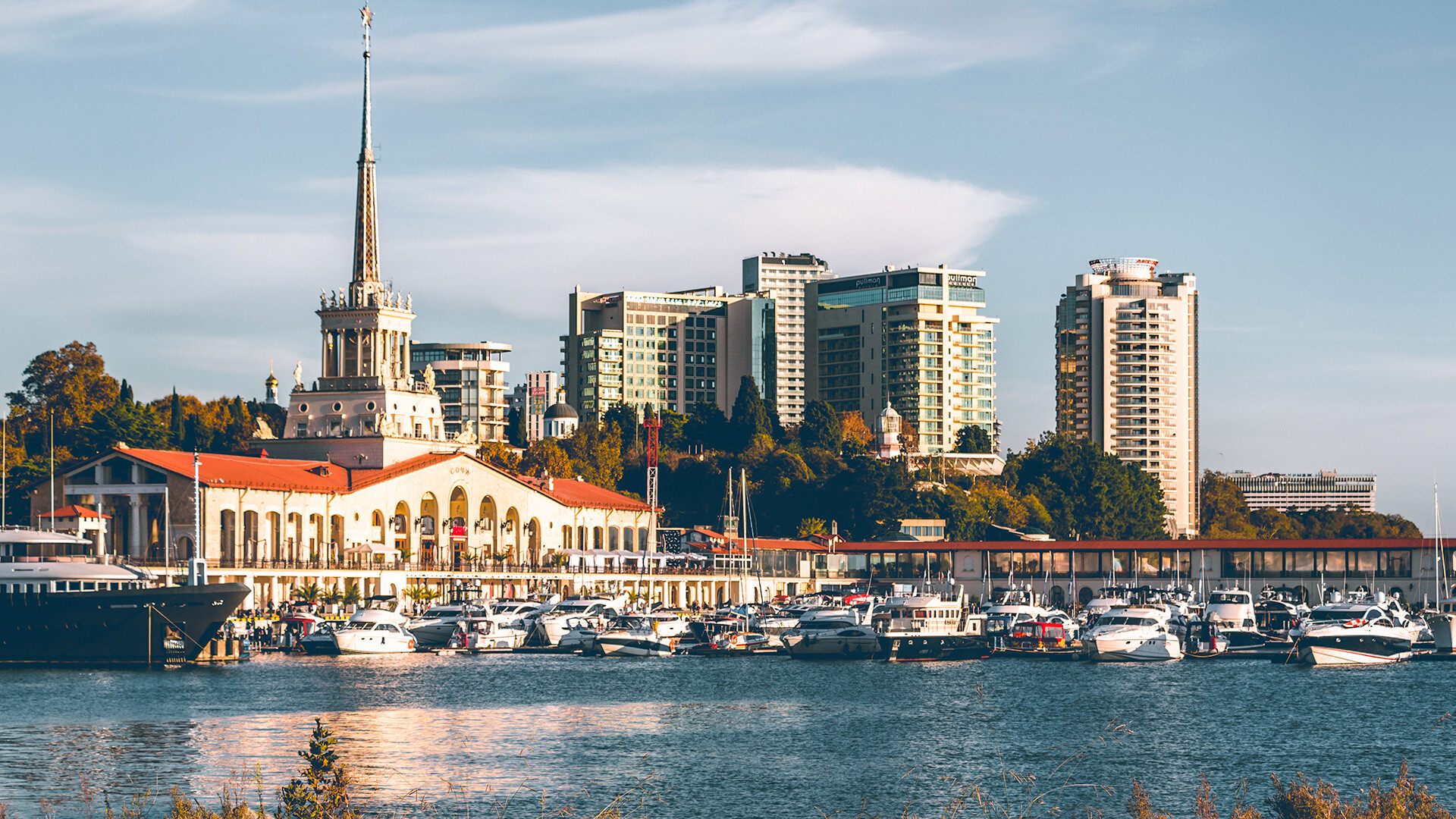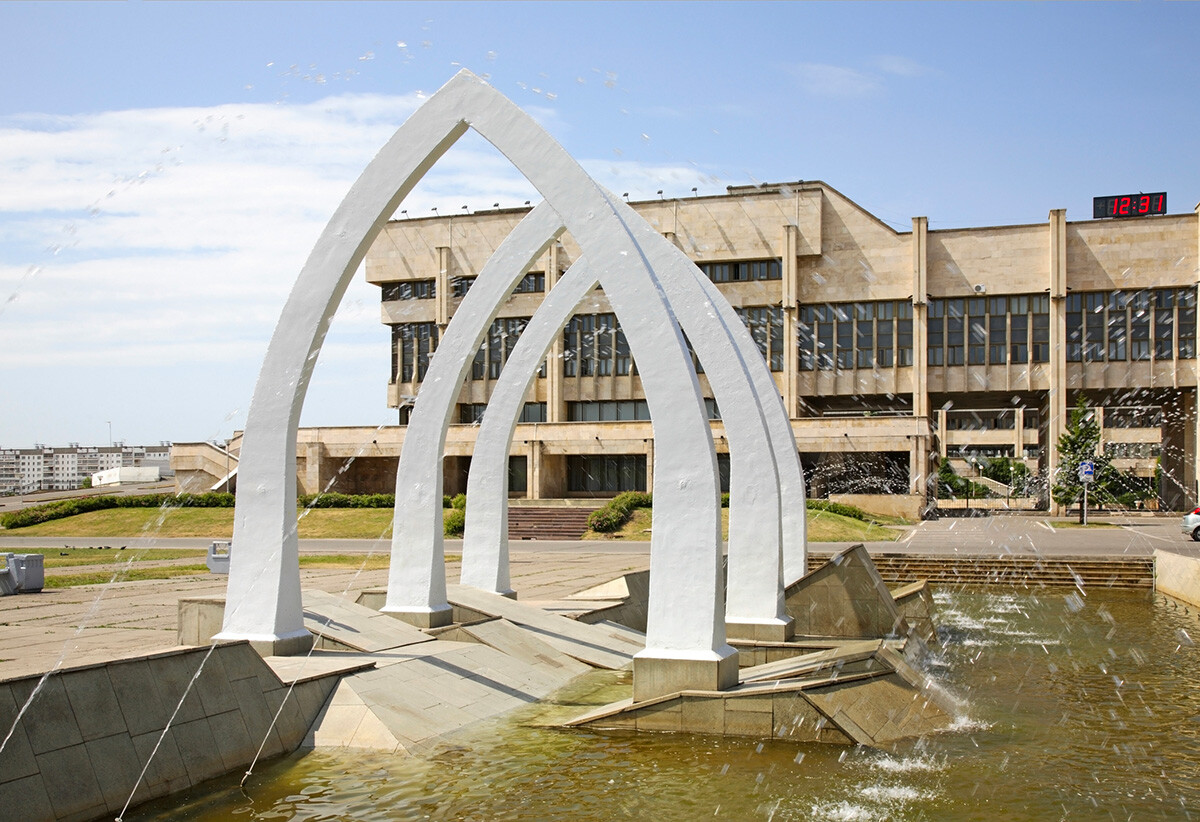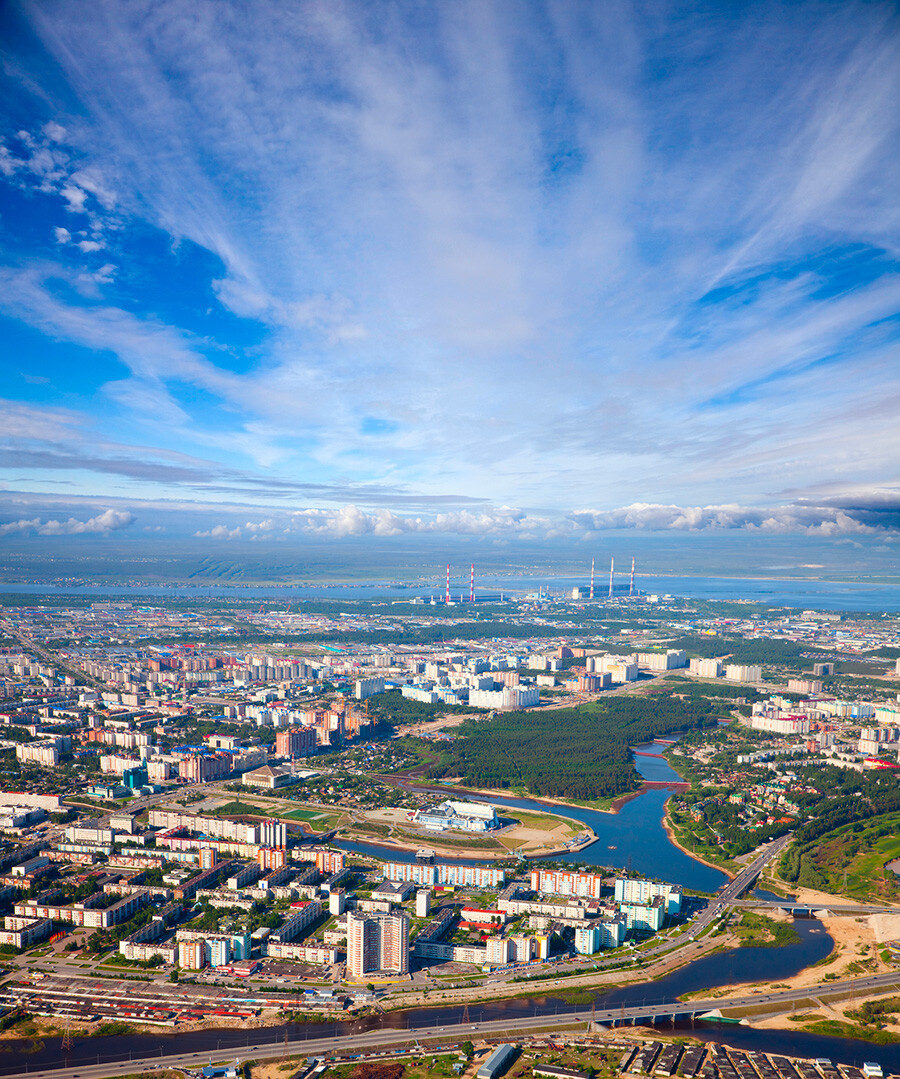Top 10 Russian cities that are not regional capitals

1. Togliatti (Samara Region)
 Aerial view of Togliatti
Aerial view of Togliatti
According to the 2020 census, 684,700 people live in Togliatti: by population, it’s the 19th-largest in the country. And, among the cities that are not administrative centers, Tolyatti leads the list by population.
The city received its current name in 1964 in honor of General Secretary of the Italian Communist Party Palmiro Togliatti, who died suddenly that year during his visit to the Soviet ‘Artek’ vacation camp in Crimea.
This name became fateful in its own way. Two years later, in 1966, Togliatti saw the construction of AvtoVAZ, the largest car plant in the country and Italian automobile manufacturer Fiat was engaged in the preparation of its technical designs. The plant ensured Togliatti would be known as the ‘Soviet Detroit’.
2. Naberezhnye Chelny (Republic of Tatarstan)
 Fountain near townhouse in Naberezhnye Chelny
Fountain near townhouse in Naberezhnye Chelny
A total of 548,500 people live in the second most important city of Tatarstan. Along with Tolyatti, this city is also notable for being home to another automobile giant – Kamaz with its truck plant.
The plant’s construction was nominated as a “Komsomol shock construction project” at the end of 1969, which means the project was of paramount importance to the country. The first phase of the plant construction was put into operation at the end of 1976. Companies from 19 countries in Europe, the U.S., Canada and Japan participated in equipping the plant. At the end of 1981, the plant was working at full capacity and, after seven more years, it paid back the expenses for its construction.
Along with the construction of the Kamaz plant, the city developed rapidly and, by the end of the 1980s, the population of Naberezhnye Chelny exceeded half a million people.
It’s interesting that, over slightly more than seven years, from 1982 to 1988, the city was named Brezhnev – in honor of the General Secretary of the Communist Party of the Soviet Union, who passed away in 1982.
3. Novokuznetsk (Kemerovo Region)
 Night Novokuznetsk
Night Novokuznetsk
Novokuznetsk’s area is 424 square kilometers – more than Vienna, Athens, Belgrade, Barcelona and even the country of Malta (316 square kilometers). It has a population of 537,500 people.
Novokuznetsk is older and larger by area than the administrative center of the region – the city of Kemerovo – and almost equal in terms of population, so, unofficially, it’s dubbed the “second capital of Kuzbass”. The oldest coal production centers and metal processing centers of Russia are located there, in particular the West-Siberian Metal Plant – the fifth largest metal plant by size in the country.
4. Balashikha (Moscow Region)
 Sunset on Pekhorka River in Balashikha
Sunset on Pekhorka River in Balashikha
Moscow Region’s largest city hosts 521,000 people. It’s about 20 kilometers away from the center of the capital. In 2021, Balashikha was recognized as the fastest growing city in Europe. In the past, it has also led the rating of Russian cities in terms of growth in the cost of secondary housing for the year.
Balashikha was named after a cloth enterprise, built in 1830: The date of the opening of this factory is considered the city’s founding day.
Today, the city is an important center of the production of aircraft wheels for civilian and military planes and helicopters, as well as landing gear and aviation hydraulic systems.
5. Sochi (Krasnodar Region)
 Caucasian Mountains view in Sochi
Caucasian Mountains view in Sochi
This city gained worldwide fame in 2014 as the place where the XXII Winter Olympic Games took place – despite the whole Sochi Metropolitan Area lying in the subtropical zone (of course, the outdoor competitions were held not on the coast of the Black Sea, but in the adjacent mountains – in the Krasnaya Polyana village). Besides the Olympics, Sochi also hosted a stage of the F1 World Championship from 2014-2021 and was a host city for the 2018 FIFA World Cup.
Sochi’s total population in 2021 was 466,000 people. There are tourists year-round on the territory of this all-season resort city, so, in reality, there are always many more people than that there.
6. Magnitogorsk (Chelyabinsk Region)
 Aerial view of Magnitogorsk
Aerial view of Magnitogorsk
Along with Novokuznetsk, Magnitogorsk is considered the key center of ferrous metallurgy. A total of 410,600 people live in this Ural Mountains city, situated on the border between Europe and Asia.
In 1931, Magnitogorsk became one of the first sotsgorods (“social cities”) built near large industrial enterprises. In Magnitogorsk, it was the Magnitogorsk Iron and Steel Works, the decree for the construction of which was signed in 1929. The main structures of the enterprise were designed with the help of American and German engineers; Czechs, Slovaks, Bulgarians, Italians, Finns, Romanians, Turks and the Polish took part in the construction, while German architect Ernst May was behind the development of the city districts.
7. Surgut (Khanty-Mansi Autonomous Area – Yugra)
 Aerial view of Surgut
Aerial view of Surgut
This city is a record holder in many things. A total of 396,500 people live in Surgut: that’s more than in the administrative center of the region, Khanty-Mansiysk (107,500 people); in 2018, it placed third in the rating of cities that make the largest contribution to the GDP of Russia, after Moscow and St. Petersburg; in 2019, Surgut placed third on the list of the wealthiest cities of the country; in 2021, it was 10th in the rating of the fastest growing European cities and the second in Russia, according to comfort and affordability of life.
Such ratings are explained by the fact that Surgut is unofficially considered the oil capital of Russia: it accounts for a quarter of all Russian oil production and the Yugra region as a whole accounts for about 42%.
From the moment of its founding in 1594 and approximately until the end of World War II, the city was a place for exiles. Its “oil” era only began at the end of the 1950s – beginning of the 1960s. The discovery of large oil deposits led to the rapid development of Surgut.
8. Nizhny Tagil (Sverdlovsk Region)
 Aerial view of Nizhny Tagil
Aerial view of Nizhny Tagil
This Ural city today is home to about 339,000 people. It owes its emergence to the copper and iron ore deposits discovered there at the end of the 18th century. Since then, Nizhny Tagil has become one of the most important industrial centers of the country. Aside from different types of ferrous metallurgy production, it produces modern versions of T-90 and T-14 Armata tanks.
Additionally, in the 1740s, Nizhny Tagil saw the emergence of the tradition of Russian lacquer tray painting: It’s believed that Tagil painting is the predecessor of Zhostovo painting that is more famous now and is often used on decorative trays of the same name.
Nizhny Tagil is also home to the ‘The Holy Family’ (1509) painting, attributed to Italian painter Raphael Santi. The painting is also called ‘The Madonna of Tagil’ – it was discovered in 1924 in the attic of the former manor of Ural landowners, the Demidovs.
9. Volzhsky (Volgograd Region)
 Volga in the city of Volzhsky
Volga in the city of Volzhsky
Volzhsky, which is home to 321,500 people, adjoins the million-plus city of Volgograd and lies 20 kilometers from its center.
Volzhsky emerged in 1951 as a village near the construction of the Stalingrad (now Volga) Hydroelectric Station – the largest in Europe (and, from 1960-1963, the largest in the world). Its power made it possible to create a territorial production complex on the territory of Volzhsky that includes chemical, metallurgy and mechanical engineering enterprises.
10. Orsk (Orenburg Region)
 Orsk railway station
Orsk railway station
Among the cities that are not administrative centers, Orsk takes first place by area: It’s 642 square kilometers in size, putting the city in 9th place in the all-Russia rating. Orsk’s total population is 224,800 people.
Like Magnitogorsk, it’s situated on the border between Europe and Asia, while the Ural river splits the city in two. Orsk was originally founded in 1735 as a fortress to protect the Russian borders from Kazakh nomads.
In the middle of the 19th century, a large gold deposit was discovered in the vicinity of Orsk; in the 1930s the construction of large industrial enterprises began here on the basis of rich local deposits of other minerals – including nickel and cobalt.
The city had the most rapid surge in its population during World War II: according to the 1939 census, it had a population of 66,300 people, but, by 1957 – 157,000. The matter was, during World War II, enterprises, military families and children without parents were evacuated to Orsk; additionally, thousands of Soviet Germans from the entire USSR were exiled there.

